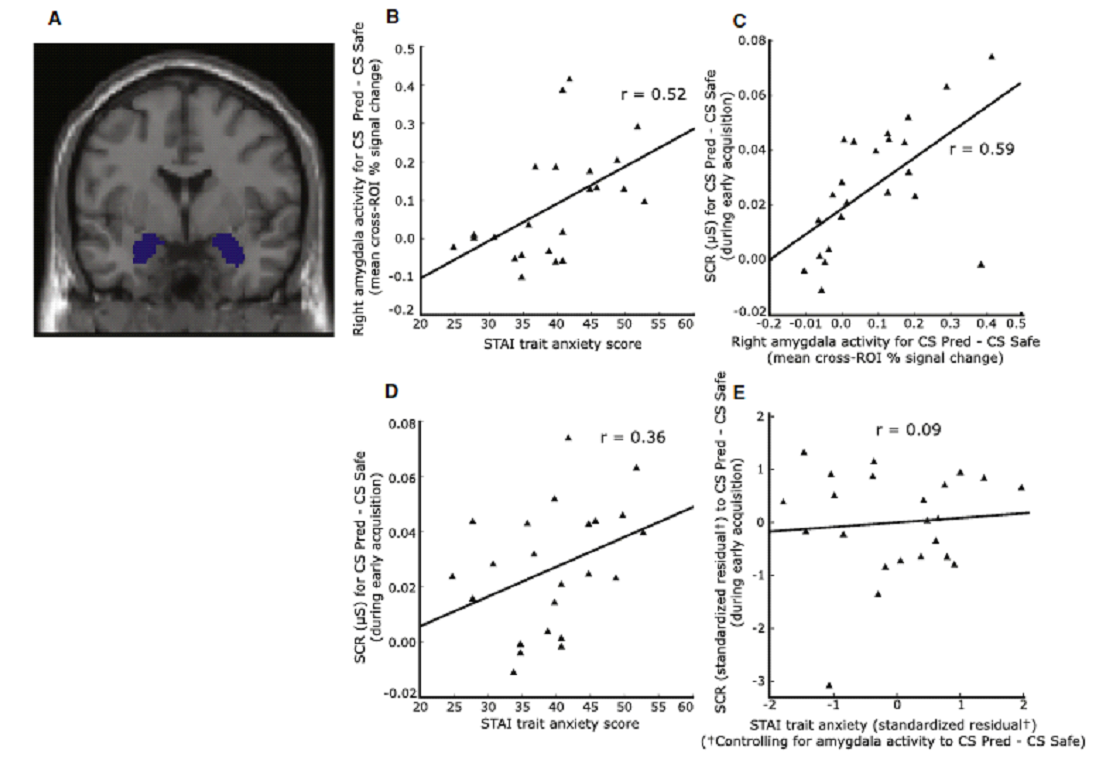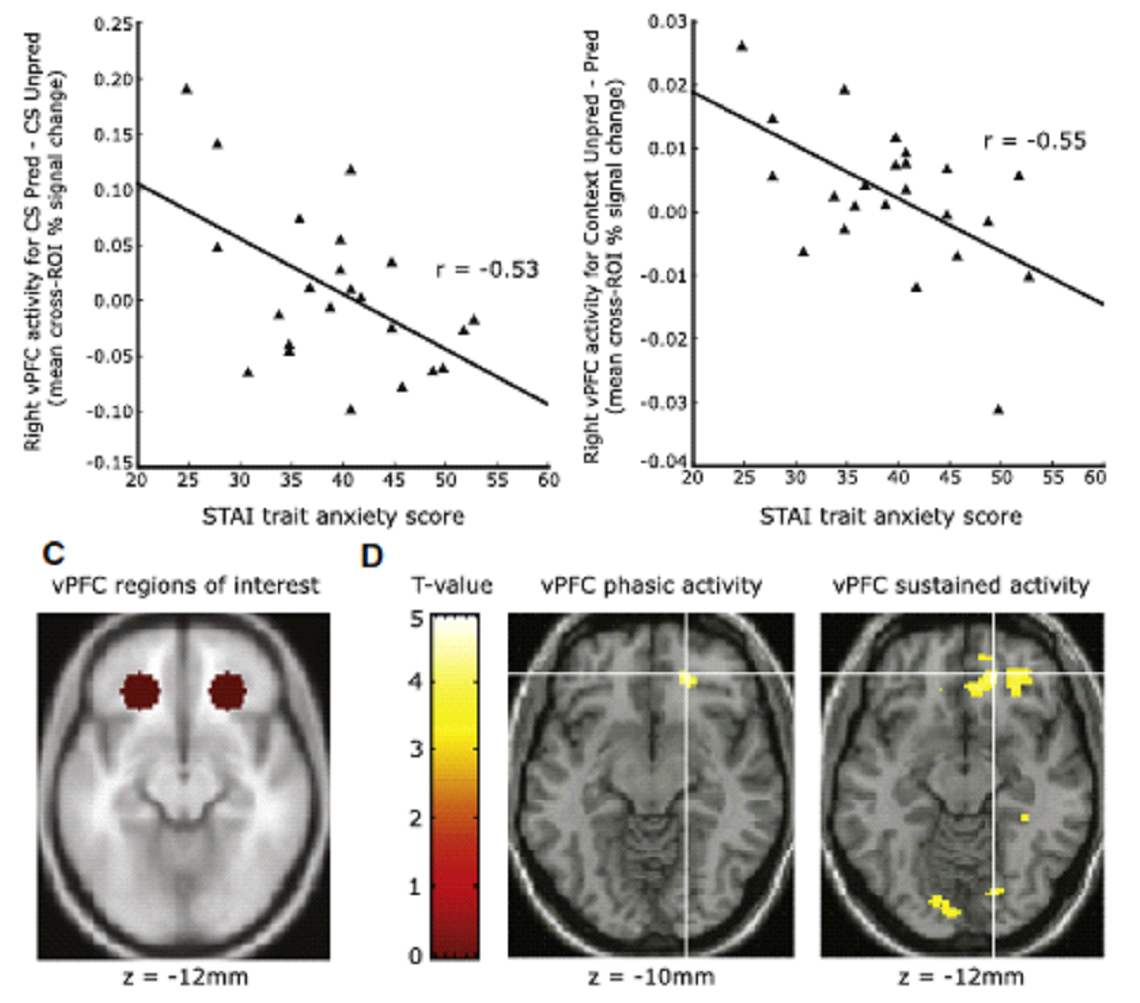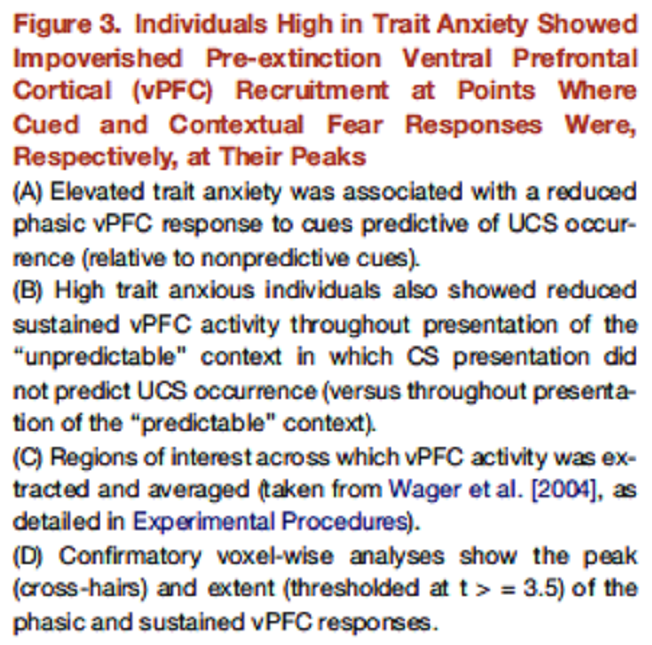Trait Anxiety and Altered Fear Learning
Many of us have fears that we have acquired in childhood or early adulthood – be it of planes, blood, certain animals or insects, or public speaking. For some individuals, however, acquired fears and associated avoidance of feared stimuli or situations can be extremely debilitating. Indeed, these processes are thought to play an important role in the etiology and maintenance of anxiety disorders. Fear responses can be linked to specific stimuli or ‘cues’ (‘cued’ or ‘phasic’ fear responses), or else they may be ‘contextual’ - sustained fear responses experienced whenever in a given situation or environment that are not stimulus specific. Experimentally, cued fear responses tend to be acquired when an initially neutral ‘conditioned stimulus’ (CS) is paired with an intrinsically aversive ‘unconditioned stimulus’ (US) - such as a loud scream or electric shock. In contrast, sustained contextual fear responses arise when a US is experienced in a given context and there is either no specific CS or CS presentation is not temporally linked to US occurrence. Neuroimaging studies with healthy human volunteers have broadly confirmed findings from the rodent literature regarding the neural mechanisms underlying both ‘cued’ and ‘contextual’ fear learning (see Delgado et al., 2006, for a review). However, the question as to which of these mechanisms show altered function in individuals with trait vulnerability to anxiety has largely remained unaddressed.
In an fMRI study addressing this issue, Indovina et al. Neuron (2011) (pdf), we found evidence that the magnitude of amygdala activity to an initially neutral CS paired with an aversive US statistically mediated the relationship between trait anxiety and the strength of the physiological cued fear response acquired to the CS. This suggests that heightened amygdala responsivity plays a role in trait anxious individuals’ predisposition to acquire novel fears.

However, once again, we also found an important role for frontal mechanisms. Trait anxiety was linked to impoverished recruitment of ventromedial prefrontal (vmPFC) regions to down-regulate fear responses in a manner appropriate to the given CS-US contingency (i.e. to whether the ‘CS’ in a given context was predictive or non-predictive of the US). This in turn was linked to the magnitude of cued and contextual fear responses shown across a lengthy ‘fear expression’ period.


These findings suggest that dysregulation of frontal mechanisms may play an important role in the maintenance of acquired fears in individuals with a predisposition to anxiety.